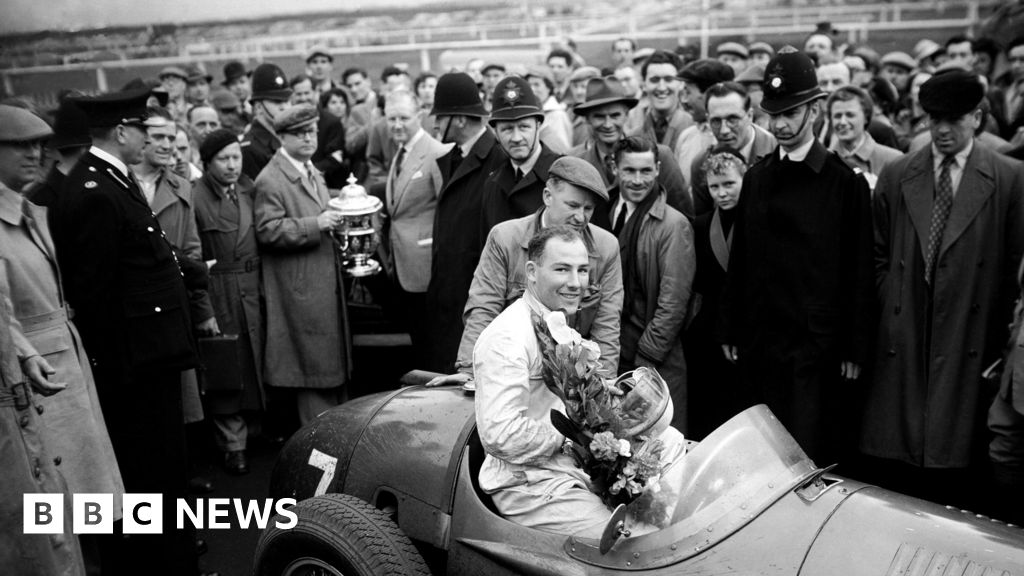- Author, Paul Burnell
- Role, BBC News
Aintree racecourse is home to the world’s best known steeplechase horse race – The Grand National.
This year, when people cheered in front of the main stand as Willie Mullins trained I Am Maximus galloped to victory, few knew they stood on a piece of motorsport history.
Because for 10 years, in the 1950s and 60s, the pounding of horse hooves would alternate with the roar of racing cars.
The half mile stretch in front of the stand – now used by standing spectators – was the finishing straight for the three mile motor racing circuit.
Seventy years ago, the Liverpool racetrack began a journey into motorsport thanks to the vision of the formidable Mrs Mirabel Topham, whose family was synonymous with the racecourse it owned.
It is thought the flamboyant Mrs Topham decided the course needed a better income stream when she first hit on the idea of motorsport on Merseyside.
John Bailie of the Aintree Circuit Club said: “It was the first purpose built motor racing course in Britain and they did it in three months.”
Image source, Stratus Imagery
He said designer David Neat was given a very specific brief by Mrs Topham.
“She wanted the course to mirror the horse race circuit so he got a scale map and wrapped piano wire around pins to chart his circuit but he had a bit of wire left over and put some more pins and created the unusual loop,” he said.
On 29 May 1954, the first race at the track’s opening meeting was won by Duncan Hamilton’s Jaguar C-type in a race that included Jimmy Stewart – father of future Formula 1 champion Sir Jackie Stewart.
Just over a year after staging its first race, Aintree hosted the 1955 British Grand Prix.
It was won by Sir Stirling Moss and watched by 150,000 spectators – the largest attendance at a Grand Prix on a single day.
Moss made history again in 1957 as the first British driver to win a Grand Prix in a British car. The Vanwall carried him to victory, but some thanks must go to his teammate Tony Brooks, who handed over his car when Moss’s own hit trouble.
Moss competed in 18 races in 11 classes of car at Liverpool, winning eight races before his career was ended in a crash at Goodwood.
“He should be mentioned in the same breath as Red Rum in terms of being Aintree’s greatest champion,” said Mr Bailie.
Five British Grand Prix races were held in the course’s golden decade from 1954 to 1964 with the course’s grandstands proving to be superb vantage points.
Eventually, safety concerns saw the race switched to Brands Hatch in Kent.
Aintree Circuit celebrated its joint 70th anniversary with a parade of cars led by the Jack Sears Ford Galaxie, which won the final race on the full thee-mile track on 16 May 1964.
It was joined by Anita Taylor’s Mini, which also took part in that final race.
Time trials still take place on the track and the Aintree club is hoping with the cooperation of the course authorities to honour the 70th anniversary of Moss’s victory next year.

